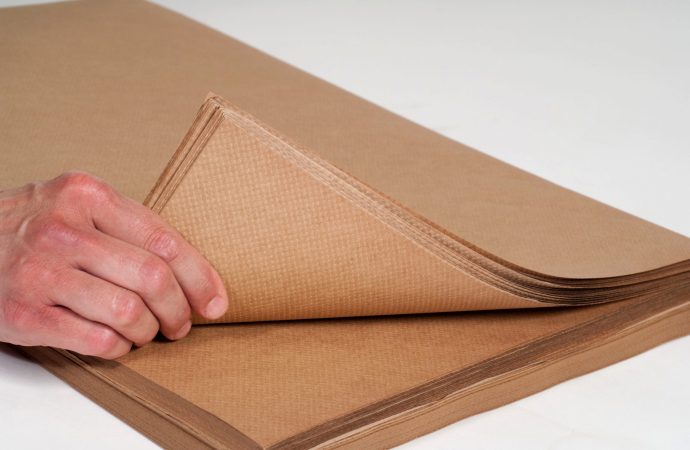Production of customized kraft papers constitutes an expanding niche in the packaging and wrapping sector because it is environmentally friendly and universal. We shall divide the vital components used to influence the cost of production in this blog, starting with raw materials to printing methods. Being aware of these costs, regardless of whether you are
Production of customized kraft papers constitutes an expanding niche in the packaging and wrapping sector because it is environmentally friendly and universal. We shall divide the vital components used to influence the cost of production in this blog, starting with raw materials to printing methods. Being aware of these costs, regardless of whether you are a manufacturer, retailer, or business owner, you will be able to plan your budget wisely. Ever since the sourcing till customization, each step influences the end cost of your kraft paper products. So, it is time to take a closer look at what contributes to the prices of custom kraft paper manufacturing.
Raw Material Costs
By the raw material costs, we mean an understanding of the need to measure whether the cost of raw materials used in a particular production is reasonable or not. Raw material is the key component of any kraft paper product, i.e., wood pulp. This pulp depends a lot on quality and origin, which affects price. The recycled pulp is cheap but can be weak due to low strength compared to virgin pulp, which results in stronger and durable paper but is more costly. The Kraft paper roll structure also influences the prices; the unit cost of paper will usually be lower when purchasing the rolls than when acquired as a sheet or a small number of sheets. The cost of production may also be raised by seasonal changes in prices of pulp and transportation tariffs. Manufacturers tend to find simplicity and cost at the expense of quality with recycled and virgin fiber blending.
Size and Thickness
The two important factors that affect the cost of Kraft paper sheets are thickness and size. When the kraft paper that should be used is thicker, it requires additional raw material, hence its price is automatically increased. Moreover, bigger sheets or rolls also consume and take more resources in manufacturing. Any necessity to customize by thickness/size may add cost and complexity as well, particularly when common machinery must be altered or the run is small. Selecting the appropriate specification according to your product requirement will assist you in ensuring that you manage cost as you have as well as ensure that you have functionality.
Impact on Pricing
The cost of adding logos, branding, and designs to kraft paper brings the cost of kraft paper printing. Special colours, multi-colour designs, or high print run multiples are costly and time-consuming in terms of making soundstages. Nevertheless, custom-printed kraft paper can move your brand presence to the next level, so the additional expenditure will be justified. At the time of the order, it is best to look into the minimum print reductions and the type of ink to use because they affect the end cost. In order to cut useless print costs, effective design planning is possible.
Cost Efficiency
A wise idea when trying to decrease the per-unit costs is the purchasing of kraft paper in large quantities. Kraft paper wholesale order enables the manufacturer to make an optimum production run, reducing materials handling and selling the benefits to the customers. Bulk purchasing is especially effective when a company requires significant amounts of custom paper to wrap or sell. Nevertheless, over-ordering of stock may tie up funds and space. There is always a need to predict demand in an accurate way to ensure maximum financial gains against waste during wholesale purchases.
Labor and Manufacturing
A large part of the costs of the production of custom paper involves labor. Competent operators are to perform mechanical tasks, quality control, and control printing. There are other overheads like utilities, equipment maintenance, and factory rent that will also contribute to the expenses.
Additional Expenses
After the production, the Kraft wrapping paper and other Kraft products are packaged in order to secure them during transportation. Such a packaging may feature protective films or custom boxes that increase the price. International deliveries may be subject to customs duties and taxes.
Production Costs
Working together with a handy Custom printed wax papers manufacturing company contributes to negotiating more advantageous prices regarding the number of orders and the requirements of each product. Looking into the avenues of sustainable sourcing can provide long-term cost-saving as the green materials become available.
Tips to Control Production Expenses
-
Optimize Order Sizes: Consolidate SKUs to hit medium or large batch discounts.
-
Simplify Designs: Limit colors and coverage to essentials.
-
Choose Digital for Small Runs: Avoid plate fees if under 5,000 units.
-
Negotiate Long-Term Contracts: Secure volume discounts and stable pricing.
-
Consider Recycled Materials: Recycled kraft can cost 10–20% less and enhances sustainability messaging.
-
Bundle Services: Combine printing, cutting, and finishing with one supplier to reduce handling fees.
Conclusion
The prices of custom kraft paper manufacturing are based on a combination of all interdependent factors, such as raw material, size, printing, labor, and logistics. Being aware of every aspect assists companies in making the right decision at both ends of quality and budget. Furthermore, close working relations with an established group of manufacturers imply effective production procedures. With the increase in demand for sustainable packaging, it becomes crucial to control these expenses to be competitive.
















